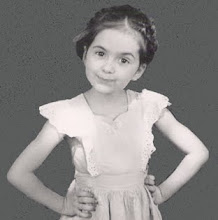 |
| Author Alexis O'Neill |
The general consensus was that there will always be physical books but that the process of presenting them will become different. People are adaptable and can embrace an infinite variety of media, though some of us may be reluctant to see this change in publishing! An opinion was expressed that actually children’s books, poetry books and novels will be the least affected by electronic publishing. Non-fiction is the most likely to thrive in an e-book format--especially text-books and travel books. (I do like the idea of not having to lug books around when traveling!) The reading of digital non-fiction books is a also a vastly different experience than the reading of a physical non-fiction book since it’s possible to enhance the images, provide definitions on demand and link to other sources, etc. Text books could conceivably become exclusively digital within the next ten years. (That would be an improvement on the backpacks full of books kids have to carry around!)
One of the points I was most interested in (and concerned about) was about illustrated picture books. They may be greatly affected, as it is possible that publishers will choose illustrators whose work will best translate to electronic format--illustrations with sharp edges or a cartoon-like look. Could this limit the wonderful variety of images we see in physical books? High resolution illustrations will be the ones that translate best to e-books, but hi-res work is more expensive to produce. So publishers may be very careful about which and how many images are used in a book.
A quote I liked, from Greg Trine: 'As long as there are kids learning to read, teachers will demand physical books. What's important for writers is not to be threatened by e-books; what's important is always the same -- character, story and voice.'
One of the points I was most interested in (and concerned about) was about illustrated picture books. They may be greatly affected, as it is possible that publishers will choose illustrators whose work will best translate to electronic format--illustrations with sharp edges or a cartoon-like look. Could this limit the wonderful variety of images we see in physical books? High resolution illustrations will be the ones that translate best to e-books, but hi-res work is more expensive to produce. So publishers may be very careful about which and how many images are used in a book.
A quote I liked, from Greg Trine: 'As long as there are kids learning to read, teachers will demand physical books. What's important for writers is not to be threatened by e-books; what's important is always the same -- character, story and voice.'
















